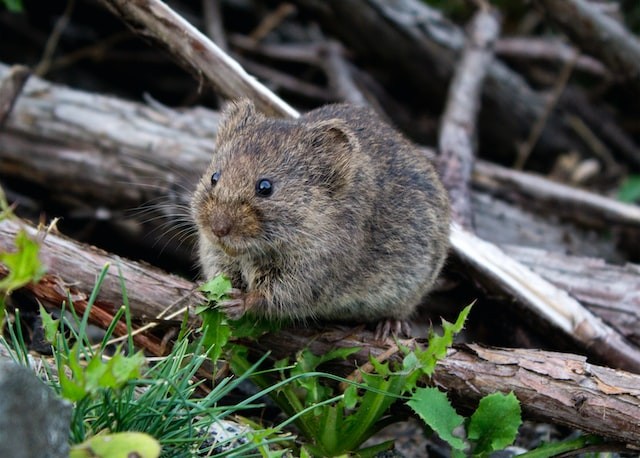Contrary to popular belief, mice do not necessarily have an inherent preference for cheese. While mice are known to enjoy a wide variety of foods, including nuts, fruits, grains, and seeds, their dietary preferences may vary depending on their tastes, genetics, and environment. Research has shown that mice prefer sweeter foods over cheese. This is because mice have a heightened sensitivity to sweet tastes due to their biology and feeding habits. Additionally, the idea of mice being attracted to cheese is likely a result of popular culture and cartoons, rather than scientific fact.
That being said, mice are highly adaptable and opportunistic creatures that will eat almost anything they can find. Therefore, while cheese may not be their preferred food, they may still consume it if it is available and accessible to them.
From cartoons such as "Tom and Jerry" to nursery rhymes like "The Farmer in the Dell," mice depicted in popular culture are often shown to have a strong liking for cheese. Even the popular mouse mascot Chuck E. Cheese has the food item in his name. However, when it comes to real mice, they do not necessarily have a specific preference for the nutty and odorous Gruyere cheese.

Are mice fond of cheese? Contrary to popular belief, house mice prefer peanut butter!
Mice Aren't Picky Eaters
It should be noted that mice are not a homogeneous group as there are several different genera, including Apodemus (field mice) and Mus (standard mice). Each mouse species is adapted to its specific habitats such as the desert pygmy mouse (Mus indutus) found in southern Africa or the steppe mouse (Mus spicilegus) found in Eastern Europe. The most common mouse species people are familiar with is the house mouse (Mus musculus).
According to Megan Phifer-Rixey, an evolutionary biologist at Drexel University in Philadelphia who studies the species, the house mouse is believed to have originated in Central and Southern Asia. However, due to human influence, they have spread worldwide. As far as their dietary habits are concerned, house mice are not known for being selective eaters. They will consume almost anything readily available to them, such as grains, insects, and even garbage. If cheese is present, they may also eat it, but cheese is not considered to be their preferred food, as per Phifer-Rixey.
In reality, what house mice appear to be fond of is peanut butter. According to Phifer-Rixey, house mice have a strong sense of smell, and peanut butter has a relatively potent odor. Moreover, mice are drawn to the protein and fat content of peanut butter, making it an attractive food option for them. As a result, peanut butter is often recommended as mouse bait by pest control experts and exterminators. To prevent the traps from getting too adhesive, oats can be mixed with peanut butter. Phifer-Rixey has even heard of people incorporating bacon bits into peanut butter to trap house mice, but in her research, she prefers to use oats, as reported by LiveScience.
Debunking Cheesy Myths
Since mice don't necessarily have a strong preference for cheese, it raises the question of where the notion of cheese-loving mice originated. Unfortunately, there is no clear answer to this question. One theory that is circulating on the internet, although unverified, suggests that in the past, people kept their cheese on open shelves, while other food items were stored in jars or hung from the ceiling. Because the cheese was easily accessible to mice, people may have observed mice eating it, leading to the modern-day stereotype of cheese-loving mice. However, this theory remains unproven.
The origins of the cheese-loving mouse stereotype are believed to date back centuries or even millennia. Some online investigators have discovered that the Roman philosopher Lucius Annaeus Seneca, who lived in the first century A.D., appeared to have assumed that mice adore cheese. According to a translation of his works by Richard Mott Gummere, a former Latin professor at Haverford College in Pennsylvania, the philosopher wrote in a letter to his friend Lucilius, "'Mouse' is a syllable. Now a mouse eats its cheese; therefore, a syllable eats cheese." This is an indication that the concept of mice and cheese may have been prevalent during the Roman period, though it is unclear if it was a common notion or a mere observation by Seneca.
It is indeed possible that the story of mice and cheese has existed for as long as humans, mice, and cheese have coexisted, from ancient Rome's halls to the contemporary rodent-themed children's arcades of suburban America. The idea of mice and cheese may have been passed down through generations of storytelling and folklore, evolving along the way to become a popular culture trope that persists to this day.
RELATED ARTICLE: Male Mice Afraid of Protective Mothers and Bananas, Here's Why
Check out more news and information on Biology on Science Times.



![Humans Will Go Extinct on Earth in 250 Million Years; Mass Extinction Will Occur Sooner if Burning Fossil Fuels Continues [Study]](https://1721181113.rsc.cdn77.org/data/thumbs/full/53373/89/56/50/40/humans-will-go-extinct-on-earth-in-250-million-years-mass-extinction-will-occur-sooner-if-burning-fossil-fuels-continues-study.jpeg)










